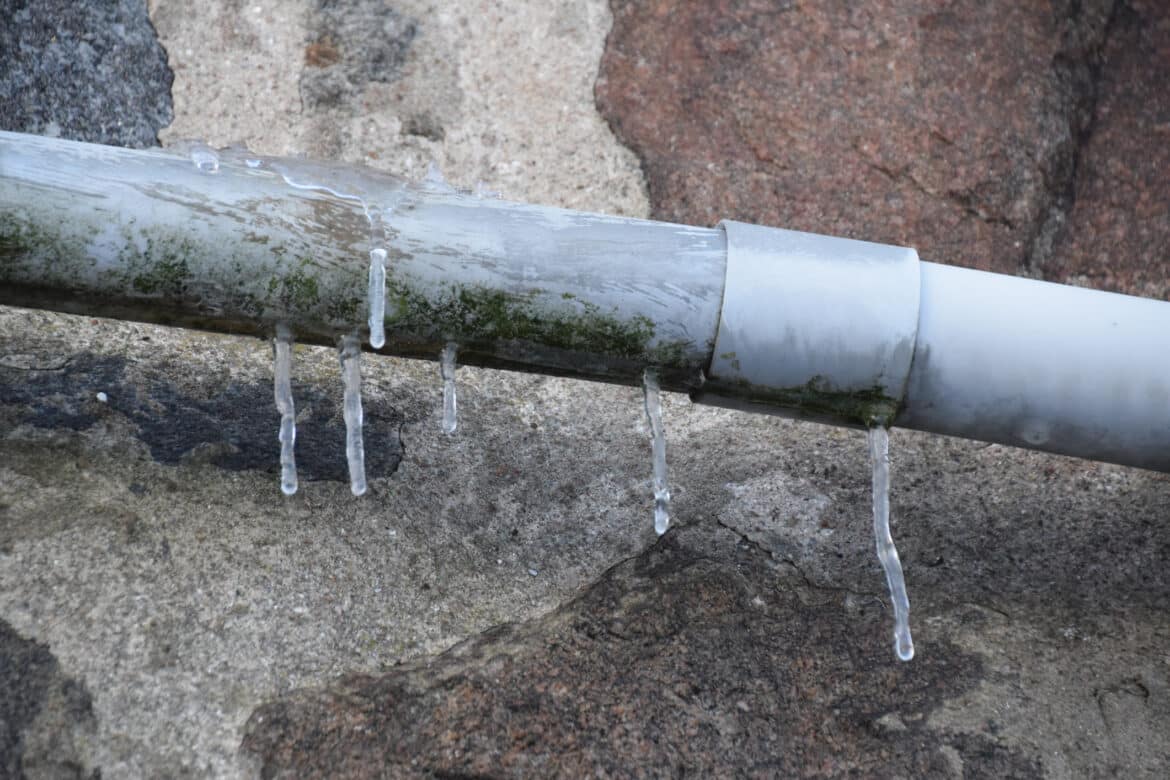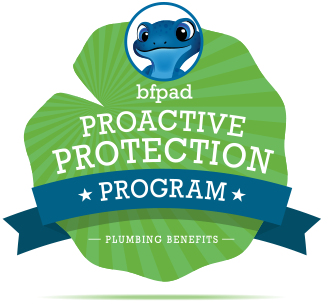
San Antonio’s Guide to Preventing Pipe Freezing
Pipe freezing may sound like a rare problem for San Antonio residents, but unexpected cold snaps can wreak havoc on local plumbing systems. When temperatures drop, unprotected pipes risk freezing, expanding, and potentially bursting—leading to costly repairs and property damage.
By understanding why pipe freezing can occur in Texas and taking a few preventive steps, San Antonio homeowners can save themselves from major winter headaches.
How Cold Temperatures Affect Plumbing
Cold temperatures can wreak havoc on plumbing systems, especially in regions like San Antonio, where extreme winter weather is often unexpected. When the mercury drops, water within pipes starts to freeze and expand.
Since water expands by about 9% when it freezes, this puts intense pressure on pipe walls. In cases where pipes are uninsulated or exposed, this pressure often results in cracks or bursts, leading to leaks and, in severe cases, extensive water damage.
The aftermath of a burst pipe can be financially and structurally devastating, soaking walls, floors, and furniture. For San Antonio homeowners, this issue can be particularly challenging, as homes in warmer regions are less likely to have fully winterized plumbing.
Therefore, it’s essential to prepare before the coldest months arrive, with proactive steps like insulating vulnerable pipes and sealing any gaps or cracks that might let in cold air.
Additionally, keeping a steady indoor temperature, even during unoccupied periods, can prevent the water within pipes from reaching the freezing point.
By taking these preventive steps now, residents can safeguard their homes and avoid the hassle, expense, and stress of dealing with frozen pipes.
Identifying Vulnerable Areas for Pipe Freezing
In San Antonio, pipe freezing often affects specific areas in homes where pipes are most exposed to the elements. Identifying these areas and taking proactive steps can significantly reduce the risk. Here’s a step-by-step guide to help you spot and protect these vulnerable zones:
-
Check Exterior Wall Pipes
Pipes running through exterior walls are at high risk for freezing, as they’re often exposed to cold outdoor air. In many San Antonio homes, insulation in exterior walls may not be sufficient for winter protection. To reduce the chance of freezing, add foam or fiberglass insulation around these pipes, ensuring they stay warm during colder spells.
-
Inspect the Garage and Basement
In regions like Stone Oaks, where garages and basements are common, these areas are prone to freezing since they usually lack heating and may have uninsulated walls. Inspect the pipes running through these areas and apply pipe insulation or wrap them in heat tape, which can activate automatically when temperatures drop, providing added protection during unexpected cold snaps.
-
Secure Outdoor Spigots and Hoses
Outdoor water sources, such as spigots and hoses, are directly exposed to cold air. Disconnect hoses from spigots and drain any water from them before winter. Installing frost-proof spigots or covering existing ones with insulated caps is an effective step to prevent cold air from reaching and freezing these pipes.
-
Examine Crawl Spaces and Attics
Pipes in crawl spaces and attics are often overlooked but remain highly susceptible to freezing due to limited insulation. Use foam pipe insulation and seal any air leaks around windows or openings to reduce the influx of cold air. A small space heater can be strategically placed in these areas during extreme cold to maintain a safe temperature around the pipes.
-
Seal Gaps and Cracks Around Pipes
Any gaps or cracks where pipes enter the home can let in cold air, intensifying the risk of pipe freezing. Seal these entry points with caulk or expanding foam to block cold drafts. By sealing these gaps, you add a layer of defense against sudden temperature drops affecting pipes in your home.
San Antonio’s milder winters can still pose risks to unprepared plumbing. By addressing these common areas step-by-step, you protect your home against the damaging effects of pipe freezing.
Insulating Pipes to Prevent Freezing
Insulating pipes in unheated areas, such as crawl spaces and basements, is a highly effective way to prevent pipe freezing, particularly during San Antonio’s occasional cold spells.
Pipe insulation is crucial because it creates a thermal barrier, protecting pipes from the rapid temperature drops that cause freezing. Here’s how Stone Oaks, TX, residents can insulate their pipes to minimize risks:
Choose the Right Insulation Material
Foam or rubber insulation sleeves are ideal for pipes in unheated areas. Foam pipe insulation is lightweight, easy to install, and effective in reducing the risk of freezing.
Rubber insulation, though slightly pricier, provides additional flexibility, making it a better option for pipes that may expand or contract. Both materials act as barriers, trapping heat and keeping pipes above freezing temperatures.
Wrap Pipes Thoroughly
Measure your pipes and cut insulation sleeves to match each section. Wrap each pipe fully, ensuring no gaps are left exposed, as even small uninsulated areas can increase freezing risk. For added protection, secure insulation with tape, especially around bends and corners where exposure is more likely.
Focus on Key Areas
In Stone Oaks, attics, garages, and basements are common areas where pipes are exposed to cold air. These spaces often lack consistent heating, so prioritizing insulation in these zones is essential. Insulating pipes in exterior walls or near windows is also advisable, as these areas are more exposed to outside temperatures.
Consider Heat Tape for Extreme Cold
For pipes in particularly vulnerable areas, heat tape is an additional layer of defense. Wrapped along the length of the pipe and activated during freezing weather, heat tape generates warmth, preventing ice formation even in the coldest temperatures. When used with insulation, heat tape provides strong protection against freezing, especially valuable for colder winters.
Applying these insulation tips can help San Antonio homeowners keep their pipes protected throughout the winter, effectively lowering the risk of damage from unexpected freezes.

Draining and Disabling Outdoor Water Lines
Winterizing outdoor water lines is an essential step to prevent pipe freezing and protect your plumbing system in San Antonio’s colder months. Even a brief cold snap can freeze any water remaining in outdoor fixtures, causing pipe bursts and leaks. Here’s a thorough approach to preparing your outdoor water lines.
-
Disconnect and Drain Garden Hoses
Start by unscrewing the hoses from each outdoor faucet. Trapped water inside hoses can freeze, expand, and damage not only the hose but also the faucet itself. To fully drain hoses, hold each one upright, allowing any remaining water to flow out. Then, coil the drained hoses and store them indoors or in a dry, protected area like a garage to prevent exposure to winter temperatures.
-
Turn Off the Outdoor Water Supply
Most homes have a shut-off valve located inside, controlling water flow to outdoor faucets. Locate this valve, usually found in the basement or near the water main, and turn it off. After shutting it off, go outside and open each faucet completely to let any water in the pipes drain out. This step ensures no water remains in the pipes, which could otherwise freeze and cause cracks. Leaving the faucet slightly open afterward helps release any residual pressure, providing extra protection during unexpected freezes.
-
Cover Outdoor Faucets for Added Protection
Once drained, cover outdoor faucets with insulated covers or specially designed faucet covers. These covers provide an extra barrier against the cold, helping to trap warmth and prevent freezing, even during sudden temperature drops. For homes in colder regions of San Antonio, like Stone Oaks, adding this step offers an added layer of security against freezing.
By proactively draining, disconnecting, and insulating your outdoor water lines, you can protect your home’s plumbing from the damaging effects of pipe freezing. These straightforward steps keep your plumbing in top shape, reducing the risk of costly repairs throughout the winter months.
Keep a Consistent Indoor Temperature
Maintaining a consistent indoor temperature of at least 55°F during colder months is essential in protecting your pipes from freezing. A steady temperature keeps water in pipes above freezing, reducing the risk of burst pipes and the extensive water damage they cause.
When the temperature drops, especially in unoccupied areas of the home, such as basements or exterior walls, pipes are more vulnerable to freezing due to colder air exposure. Keeping indoor temperatures stable ensures that heat circulates throughout the home, even reaching these less-heated areas where pipes are often at higher risk.
Installing a smart thermostat can make it much easier to maintain this consistent warmth. These devices let you set minimum temperatures and monitor your heating remotely, providing peace of mind when you’re away from home.
For example, if San Antonio experiences an unexpected cold snap, a smart thermostat allows you to adjust your heating in real-time via smartphone, ensuring that your pipes stay protected even if you’re not there to monitor them.
Many smart thermostats also offer programmable schedules and energy-saving settings, which help you avoid excessive heating costs. Some devices even include geofencing technology, which adjusts the temperature based on your location, or features that detect temperature drops, alerting you to potential freezing risks before they become a problem.
For San Antonio residents, these options are ideal for managing seasonal temperature changes, particularly in areas like Stone Oaks, where unexpected weather shifts are more common.
Setting up a reliable heating plan with a smart thermostat reduces the risk of pipe freezing, protects your home from winter plumbing issues, and ensures efficient temperature control throughout the season.
Preventing Freezing with Minimal Water Flow
Letting faucets drip slightly during cold weather is a highly effective way to prevent pipe freezing, a common problem that can lead to costly plumbing repairs.
A slow but steady flow of water reduces the likelihood of freezing by keeping water moving and relieving internal pressure, which is crucial as still water is more prone to freezing.
Additionally, a slow drip minimizes the buildup of pressure that can burst pipes, which is often the cause of significant water damage in homes.
To get the most out of this technique, focus on faucets located in high-risk areas: sinks along exterior walls, in unheated basements, and in crawl spaces.
These zones are more susceptible to cold temperatures, so even a minimal flow of water can help protect them from freezing. Kitchen sinks near drafty windows or in rooms without adequate insulation also benefit significantly from this preventive measure.
Incorporating this simple yet effective step gives homeowners a budget-friendly way to guard against winter plumbing issues. By allowing a small flow in these vulnerable areas, you can minimize the chance of pipe freezing and avoid the disruption and expense of burst pipes during colder months.
Special Tips for Severe Cold Snaps
During severe cold snaps, taking proactive steps to prevent pipe freezing can save homeowners from costly repairs and water damage. Implementing a few essential strategies can make a significant difference, especially in areas prone to sudden temperature drops.
Install Heat Tape for Exposed Pipes
Heat tape is an effective solution for preventing pipe freezing in areas like basements, crawl spaces, and exterior walls. This tape wraps around pipes, providing a low, steady heat that keeps water flowing even when outside temperatures plummet.
Many types of heat tape have thermostats that automatically activate when temperatures approach freezing, offering a consistent defense without constant monitoring. For safe installation, follow manufacturer guidelines closely and avoid overlapping the tape, as this can lead to overheating and damage.
Keep Cabinet Doors Open to Circulate Warm Air
Pipes located in cabinets under sinks or along exterior walls are especially vulnerable to freezing. Leaving cabinet doors open allows warm air from the home to reach these enclosed spaces, helping to maintain a safe temperature.
This simple step is particularly effective during overnight hours when temperatures are likely to drop. For added safety, remove any cleaning chemicals or potentially harmful items from accessible cabinets, especially if there are children or pets in the home.
Utilize Portable Heaters in Unheated Areas
Portable heaters provide an additional layer of warmth in at-risk areas like garages, basements, or other spaces without direct heating. When using portable heaters, position them away from flammable materials, and opt for models with automatic shutoff features for enhanced safety.
These heaters can prevent pipe freezing by maintaining a consistent, warm environment around the pipes, even during intense cold snaps. However, always supervise portable heaters to prevent overheating, and use them as a temporary measure during extreme cold.
Implementing these targeted measures enables San Antonio homeowners to safeguard their plumbing from the harmful effects of pipe freezing. Using a combination of heat tape, cabinet door adjustments, and portable heating creates a robust plan for managing even the harshest winter temperatures, ensuring pipes remain secure and the home’s plumbing stays protected throughout the season.

Professional Inspections for Long-Term Protection
Scheduling an annual plumbing inspection each October with bluefrog Plumbing + Drain of San Antonio is a proactive measure to protect against pipe freezing and avoid costly winter damage.
When colder months hit, small vulnerabilities in your plumbing system—like minor leaks, aging joints, or exposed pipes—become prime candidates for pipe freezing. This risk can lead to cracked or burst pipes, which often require expensive repairs and lead to unexpected water damage.
By arranging for a professional inspection, San Antonio homeowners can address these potential problems before winter, helping to reduce the likelihood of pipe freezing when temperatures drop.
The licensed plumbers at bluefrog Plumbing + Drain of San Antonio are experts at identifying and treating high-risk areas in your plumbing system. They understand which spots are most vulnerable to pipe freezing, including basements, crawl spaces, and exterior walls.
With their assistance, you can take protective steps such as insulating pipes, installing heat tape, or upgrading to more freeze-resistant materials, all of which lower the risk of pipe freezing and ensure your plumbing is well-prepared for sudden cold spells.
Investing in these inspections with bluefrog Plumbing + Drain of San Antonio offers both short-term protection and long-term resilience for your home’s plumbing.
By identifying risks and implementing preventive measures, you minimize the chances of pipe freezing and keep your system functioning smoothly through winter, giving you peace of mind without the worry of frozen, burst pipes.
FAQ: Pipe Freezing Prevention
-
What signs indicate a pipe may be freezing?
Signs of pipe freezing include reduced water flow, visible frost on pipes, or unusual sounds like creaking. These indicators mean ice is forming, which can lead to bursting as it expands.
-
Is it safe to use space heaters or heating cables around pipes?
Yes, both are effective when used carefully. Keep space heaters clear of flammable items and never leave them unattended. Heating cables are ideal for preventing pipe-freezing by providing controlled warmth directly on pipes.
-
How much insulation is needed for San Antonio winters?
A ½ to 1 inch of insulation on pipes in unheated areas is typically adequate. For extra security during sudden freezes, consider heat tape on exposed sections to further prevent pipe freezing.
-
What should you do if a pipe freezes despite precautions?
Open the faucet and gently apply heat to the frozen section with a hair dryer or heating pad, working from the faucet end. Avoid open flames to prevent damage.
-
Are there long-term upgrades to prevent pipe freezing?
Yes, consider installing insulated pipes, using heat tape, or relocating vulnerable pipes away from exterior walls for lasting protection against pipe freezing.
Protect your home from pipe freezing this winter with expert care from bluefrog Plumbing + Drain of San Antonio. Our tailored inspections, advanced insulation, and heating solutions keep your plumbing safe. Contact us today for worry-free winter protection!











